Content for TS 23.303 Word version: 17.1.0
4 Architecture Model and Concepts
4.1 General Concept
4.2 Architectural Reference Model
4.3 Reference points
4.4 Functional Entities
4.4.1 ProSe Function
4.4.2 UE
4.4.3 ProSe UE-to-Network Relay for Public Safety
4.4.4 ProSe Application Server
4.4.5 MME
4.4.6 P-GW
4.4.7 S-GW
...
...
4 Architecture Model and Concepts p. 13
4.1 General Concept p. 13
Proximity Services (ProSe) are services that can be provided by the 3GPP system based on UEs being in proximity to each other.
The 3GPP system enablers for ProSe include the following functions:
- EPC-level ProSe Discovery;
- EPC support for WLAN direct discovery and communication;
- Direct discovery;
- Direct communication;
- UE-to-Network Relay.
4.2 Architectural Reference Model p. 13
Figure 4.2-1 shows the high level view of the non-roaming architecture. In this Figure, UE A and UE B use a subscription of the same PLMN.
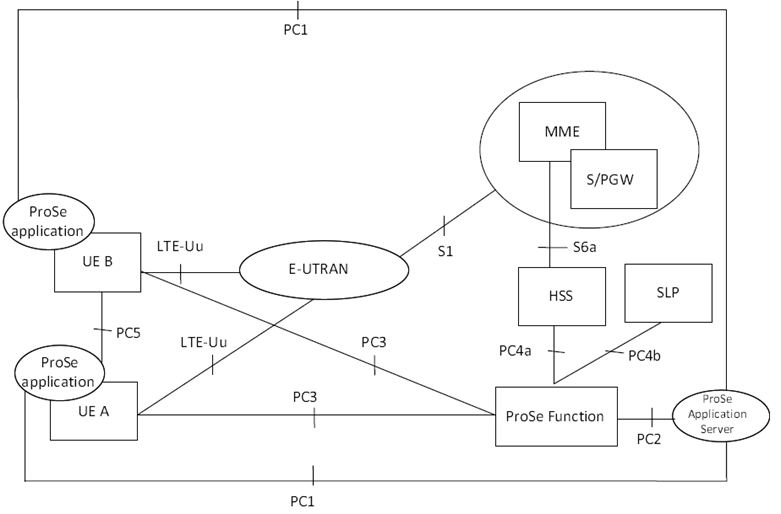
The following Figure 4.2-2 shows the high level view of the non-roaming inter-PLMN architecture. In this Figure, PLMN A is the HPLMN of UE A and PLMN B is the HPLMN of UE B.
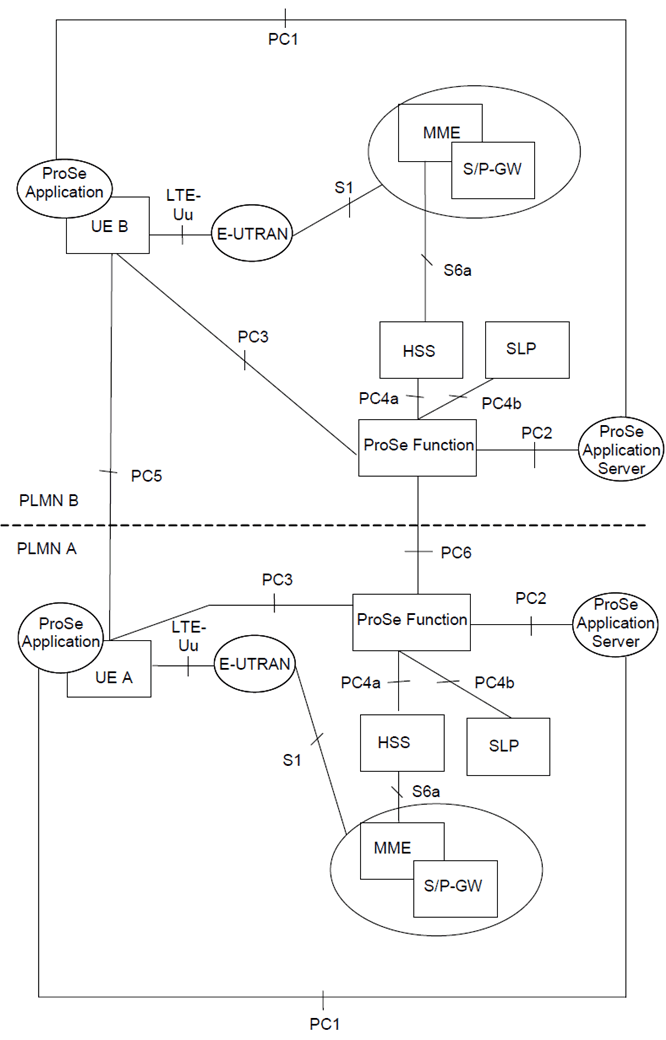
Figure 4.2-3 shows the high level view of the roaming architecture. In this Figure, UE A uses a subscription of PLMN A and UE B uses a subscription of PLMN B; UE A is roaming in PLMN C while UE B is not roaming.
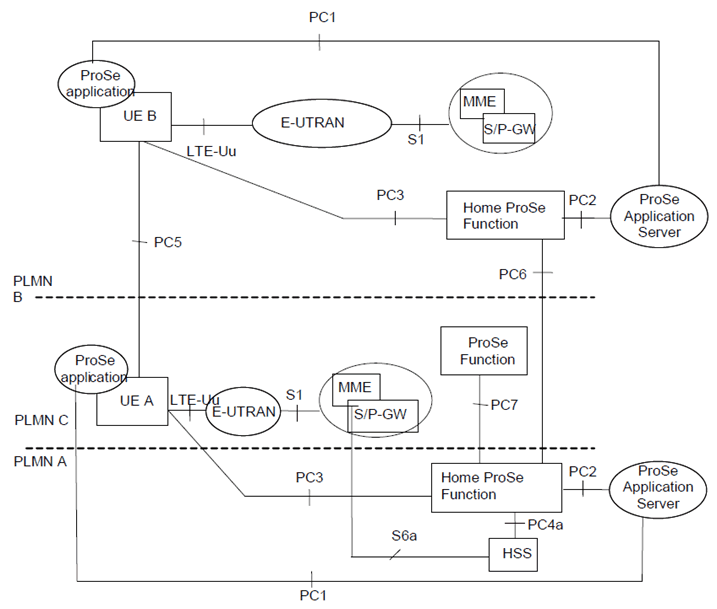
4.3 Reference points p. 15
4.3.1 List of Reference Points p. 15
PC1:
The reference point between the ProSe application in the UE and in the ProSe Application Server. It is used to define application level signalling requirements. This reference point is not specified in this release of the specification.
PC2:
The reference point between the ProSe Application Server and the ProSe Function. It is used to define the interaction between ProSe Application Server and ProSe functionality provided by the 3GPP EPS via ProSe Function (e.g. name translation) for ProSe Direct Discovery and EPC-level ProSe discovery.
PC3:
The reference point between the UE and the ProSe Function. PC3 relies on EPC user plane for transport (i.e. an "over IP" reference point). It is used to authorise ProSe Direct Discovery and EPC-level ProSe Discovery requests, and perform allocation of ProSe Application Codes / ProSe Restricted Codes corresponding to ProSe Application Identities used for ProSe Direct Discovery. It is used to define the authorisation policy per PLMN for ProSe Direct Discovery (for Public Safety and non -Public Safety) and communication (for Public Safety only) between UE and ProSe Function.
PC4a:
The reference point between the HSS and ProSe Function. It is used to provide subscription information in order to authorise access for ProSe Direct Discovery and ProSe Direct Communication on a per PLMN basis. It is also used by the ProSe Function (i.e. EPC-level ProSe Discovery Function) for retrieval of EPC-level ProSe Discovery related subscriber data.
PC4b:
The reference point between the SUPL Location Platform (SLP) defined in OMA AD SUPL [2] and the ProSe Function. It is used by the ProSe Function (i.e. EPC-level ProSe Discovery Function) (in the role of LCS client to query the SLP defined in OMA AD SUPL [2].
PC5:
The reference point between ProSe-enabled UEs used for control and user plane for ProSe Direct Discovery, ProSe Direct Communication and ProSe UE-to-Network Relay. The lower protocol layers of the PC5 reference point can be based on E-UTRA sidelink capabilities specified in TS 36.300 or on WLAN technology.
PC6:
The reference point between ProSe Functions in different PLMNs (EPC-level ProSe Discovery) or between the ProSe Function in the HPLMN and the ProSe Function in a Local PLMN (ProSe Direct Discovery). With ProSe Direct Discovery this reference point is used for HPLMN control of ProSe service authorization. It is also used to authorise ProSe Direct Discovery requests, retrieve the Discovery Filter(s) corresponding ProSe Application ID name(s) and translate the ProSe Application Code to the ProSe Application ID Name.
PC7:
The reference point between the ProSe Function in the HPLMN and the ProSe Function in the VPLMN. It is used for HPLMN control of ProSe service authorization. It is also used to authorise ProSe Direct Discovery requests, retrieve the Discovery Filter(s) corresponding ProSe Application ID name(s) and translate the ProSe Application Code to the ProSe Application ID Name.
S6a:
In addition to the relevant functions defined in TS 23.401 for S6a, in case of ProSe S6a is used to download ProSe related subscription information to MME during E-UTRAN attach procedure or to inform MME subscription information in the HSS has changed.
S1-MME:
In addition to the relevant functions defined in TS 23.401 for S1-MME, in case of ProSe it is also used to convey the ProSe direct services authorization from MME to eNodeB.
4.4 Functional Entities p. 16
4.4.1 ProSe Function p. 16
4.4.1.1 General p. 16
The ProSe Function is the logical function that is used for network related actions required for ProSe. The ProSe Function plays different roles for each of the features of ProSe. In this version of the specification it is assumed that there is only one logical ProSe Function in each PLMN that supports Proximity Services.
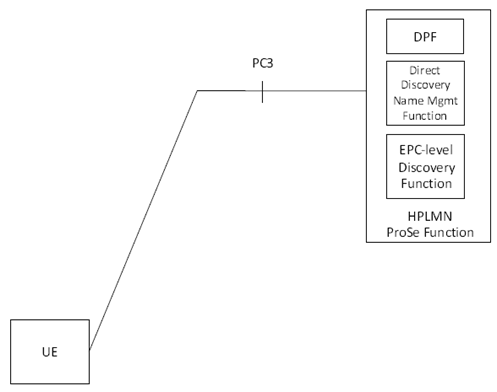
Figure 4.4.1-1: UE to ProSe Function Interfaces for each sub-function
(⇒ copy of original 3GPP image)
(⇒ copy of original 3GPP image)
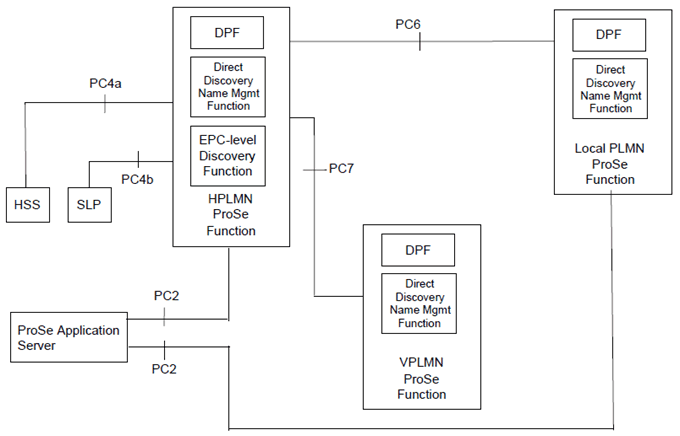
Figure 4.4.1-2: ProSe Function Interfaces to other network elements and PLMNs
(⇒ copy of original 3GPP image)
(⇒ copy of original 3GPP image)
The ProSe Function consists of three main sub-functions that perform different roles depending on the ProSe feature:
- Direct Provisioning Function (DPF) is used to provision the UE with necessary parameters in order use ProSe Direct Discovery and Prose Direct Communication. It is used to provision the UEs with PLMN specific parameters that allow the UE to use ProSe in this specific PLMN. For direct communication used for Public Safety DPF is also used to provision the UE with parameters that are needed when the UE is not served by E-UTRAN. For restricted ProSe Direct Discovery, it also generates and maintains the ProSe Discovery UE ID (PDUID).
- Direct Discovery Name Management Function is used for open Prose Direct Discovery to allocate and process the mapping of ProSe Applications IDs and ProSe Application Codes used in ProSe Direct Discovery. It uses ProSe related subscriber data stored in HSS for authorisation for each discovery request. It also provides the UE with the necessary security material in order to protect discovery messages transmitted over the air. In restricted ProSe Direct Discovery, it also interacts with the Application Server via PC2 reference points for the authorization of the discovery requests.
-
EPC-level Discovery ProSe Function has a reference point towards the Application Server (PC2), towards other ProSe Functions (PC6), towards the HSS (PC4a) and the UE (PC3). The functionality includes the following:
- Storage of ProSe-related subscriber data and/or retrieval of ProSe-related subscriber data from the HSS;
- Authorization and configuration of the UE for EPC-level ProSe Discovery and EPC-assisted WLAN direct discovery and communication over PC3;
- Storage of a list of applications that are authorized to use EPC-level ProSe Discovery and EPC-assisted WLAN direct discovery and communication;
- Acting as location services client (SLP agent) to enable EPC-level ProSe Discovery;
- Providing the UE with information to assist WLAN direct discovery and communications;
- Handling of EPC ProSe User IDs and Application Layer User IDs;
- Exchange of signalling with 3rd party Application Servers over PC2 reference point for application registration and identifier mapping;
- Exchange of signalling with ProSe Functions in other PLMNs over PC6 reference points for sending proximity requests, proximity alerts and location reporting;
- Optional support for functionality for requesting UE location via the HSS.
4.4.1.2 ProSe Function Discovery p. 18
The ProSe Functions of HPLMN is discovered through interaction with the Domain Name Service function. The FQDN of a ProSe Function in the Home PLMN may either be pre-configured on the UE or provisioned by the network or self-constructed by the UE, e.g. derived from PLMN ID of the HPLMN. The IP address of a ProSe Function in the Home PLMN may also be provisioned to the UE.
4.4.2 UE p. 18
Any ProSe-enabled UE may support the following functions:
- Exchange of ProSe control information between ProSe-enabled UE and the ProSe Function over PC3 reference point.
- Procedures for open and restricted ProSe Direct Discovery of other ProSe-enabled UEs over PC5 reference point.
- Procedures for one-to-many ProSe Direct Communication over PC5 reference point.
- Procedures for one-to-one ProSe Direct Communication over PC5 reference point.
- Procedures to act as a ProSe UE-to-Network Relay. The Remote UE communicates with the ProSe UE-to-Network Relay over PC5 reference point. The Prose UE-to-Network Relay uses layer-3 packet forwarding.
- Exchange of control information between ProSe-UEs over PC5 reference point, e.g. for UE-to-Network Relay Discovery and Group Member Discovery.
- Exchange of ProSe control information between another ProSe-enabled UE and the ProSe Function over PC3 reference point. In the ProSe UE-to-Network Relay case the Remote UE will send this control information over PC5 user plane to be relayed over the LTE-Uu interface towards the ProSe Function.
- Configuration of parameters (e.g. including IP addresses, ProSe Layer-2 Group IDs, Group security material, radio resource parameters). These parameters can be pre-configured in the UE, or, if in coverage, provisioned by signalling over the PC3 reference point to the ProSe Function in the network.
4.4.3 ProSe UE-to-Network Relay for Public Safety |R13| p. 19
The ProSe UE-to-Network Relay entity provides the functionality to support connectivity to the network for Remote UEs (see Figure 4.4.3-1).
A UE is considered to be a Remote UE for a certain ProSe UE-to-Network relay if it has successfully established a PC5 link to this ProSe UE-to-Network Relay. A Remote UE can be located within E-UTRAN coverage or outside of E-UTRAN coverage.

Figure 4.4.3-1: Architecture model using a ProSe UE-to-Network Relay
(⇒ copy of original 3GPP image)
(⇒ copy of original 3GPP image)
The ProSe UE-to-Network Relay shall relay unicast traffic (UL and DL) between the Remote UE and the network. The ProSe UE-to-Network Relay shall provide generic function that can relay any IP traffic.
One-to-one Direct Communication is used between Remote UEs and ProSe UE-to-Network Relays for unicast traffic as specified in clause 5.4.5.
The ProSe UE-to-Network Relay may also relay eMBMS traffic using one-to-many ProSe Direct Communication as specified in clause 5.4.4.4.
4.4.4 ProSe Application Server p. 19
The ProSe Application Server supports the following capability:
- Storage of EPC ProSe User IDs: ProSe Function IDs, ProSe Discovery UE ID, metadata;
- Mapping of Application Layer User IDs and EPC ProSe User IDs;
- Mapping of RPAUID and PDUID for restricted ProSe Direct Discovery;
- Maintaining permission information for the restricted ProSe Direct Discovery using RPAUIDs;
- Allocation of the ProSe Application Code Suffix pool, if open Direct Discovery with application-controlled extension is used;
- Allocation of the mask(s) for ProSe Application Code Suffix, if open Direct Discovery with application-controlled extension is used.
- Allocation of the ProSe Restricted Code Suffix pool, if restricted Direct Discovery with application-controlled extension is used;
- Allocation of the mask(s) for ProSe Restricted Code Suffix, if restricted Direct Discovery with application-controlled extension is used.
4.4.5 MME p. 20
In addition to the function defined in TS 23.401 in case of ProSe MME performs the following functions:
- receives subscription information related to ProSe from the HSS;
- provides indication to the E-UTRAN that the UE is authorized to use ProSe.
- maintains a list of Remote UEs handled by a UE-to-Network Relay UE for the specific PDN and forwards the Remote UE information towards S-GW.
4.4.6 P-GW |R13| p. 20
In addition to the function defined in TS 23.401, the P-GW performs the following functions:
- receives information related to the ProSe UE-to-Network Relay from the S-GW;
- maintains a list of Remote UEs handled by the UE-to-Network Relay UE for the specific PDN.
4.4.7 S-GW |R13| p. 20
In addition to the function defined in TS 23.401, the S-GW performs the following functions:
- receives information related to the ProSe UE-to-Network Relay from the MME;
- maintains a list of Remote UEs handled by the UE-to-Network Relay UE for the specific PDN and forwards the Remote UE information towards P-GW.